Flexible packaging has become common. Almost every industry uses these packages due to their lightweight and versatility. However, different packaging film types are available in the industry. Each offers unique value and features.
The FPA says flexible packaging films account for nearly 21% of the $180.3 billion US packaging market. All types of packaging films contribute differently to this percentage. Knowing about these types means taking advantage of significant opportunities. Therefore, let’s drill down and discuss all the types of flexible packaging films.
Overview of Flexible Packaging Film
It is a thin film made with strong yet very lightweight material. Almost all industries use it to package goods and products. These packaging films can be either transparent or opaque. They are generally made with different materials, such as aluminum foil and plastic.
Flexible packaging film is beneficial in many ways. It is versatile and durable. When applied to any material, it protects that material from external factors. So, the material and its content remain safe for an extended duration. The trend of using flexible packing is on the boom.
Apart from its durability, these films are recyclable. So, different government authorities encourage industries to use flexible packaging film. Along with environmental sustainability, these films are cost-effective for the industry itself. In the upcoming section, we will discuss those types of flexible packaging film.
Flexible Packaging Film Types
As I said earlier, there are many types of packaging films. Each serves a different purpose and has various levels of efficiency. Let’s discuss the types of these packing films in complete detail.
1- Polyethylene (PE) Films
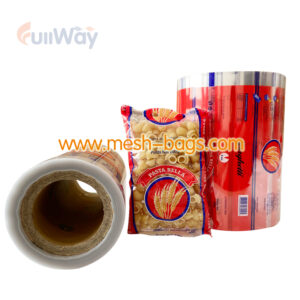
Polyethylene is a plastic used in making these packaging films. This material is very robust and lightweight. So, when used in packaging, it imparts high strength and durability to the packaging film. There are two main types of these materials, which are as follows:
- High-Density Polyethylene (HDPE)
- Low-Density Polyethylene (LDPE)
HDPE is used in films for rigid and extensive materials. You’ll see such packaging on detergent and heavy water bottles. In contrast, LDPE is more flexible than HDPE and is used for softer products. Examples include shopping bags and bread bags.
What are the critical features of films made from polyethylene plastic? These films are very durable and flexible. Above all, they’re less expensive, which makes them stand out. They can also withstand high heat and corrosive substances.
2- Polypropylene (PP) Films
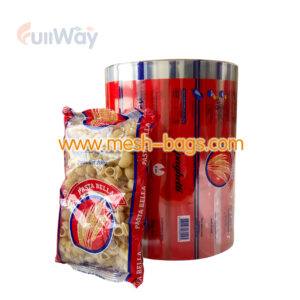
This polypropylene plastic makes the packaging films more transparent. It offers both strength and flexibility to the packaging. The PP is also very affordable compared to other materials available. It comes in two versions, which are as follows:
- Cast Polypropylene (CPP)
- Biaxially Oriented Polypropylene (BOPP)
BOPP offers good clarity and stiffness and is well known for its ability to resist moisture. The industry uses it for food packaging, such as chips and cookies. On the other hand, CPP is used when the film needs more flexibility.
Quick Highlight: Have you ever seen the packaging of clothes you buy? It is usually made from transparent CPP films, so you can easily see the cloth inside.
3- Polyolefin Film (POF)
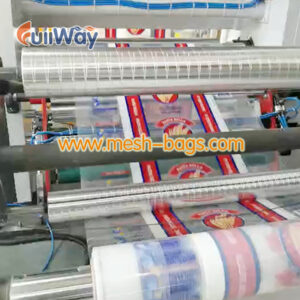
These polyolefin packaging films are popular because of their strength. They are also the best choice for resistance to heat and puncture. Let’s discuss their usability and application. This type of flexible packaging film is commonly used in food and book packaging.
It is interesting to note that this type of film is used in shrink wrapping. You might have seen the shrink-packed bottle of water at the airport. That’s an example of POF film packaging. In this method, the film is heated and shrank with the material. This keeps the product safe in the packaging.
4- Polyvinyl Chloride (PVC) Films
This is one of the most used and versatile packaging film types available. What makes this type stand out is that it keeps the material fresh. For example, if you pack meat or any other food, this packaging will keep it in good condition. The food can be stored for a long time.
You might think that bacteria or other harmful elements might affect the food. However, PVC effectively keeps food safe from these harmful entities. This is due to its non-conductive nature, which doesn’t allow anything to seep into the package. Moreover, it offers resistance to moisture and chemicals.
5- Polyester (PET) Films
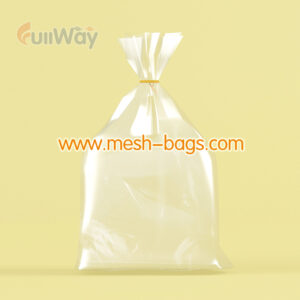
PET films are also a decent option due to their strength, clarity, and barrier properties. They are used in various industries due to their better barrier properties. Moreover, some people use them to store food. This material is known for protecting its contents from oxygen and moisture.
So, whatever you pack in these films will remain in decent condition for long. PET is commonly used to pack soda and juice bottles and microwaveable food trays. Like other types, it is also recycled and eco-friendly.
6- Polylactic Acid (PLA) Films
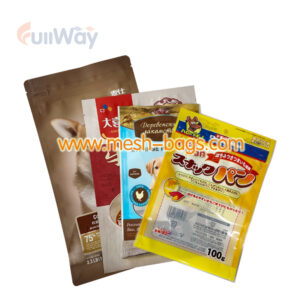
This type of flexible packaging film is biodegradable. It starts to break down after a certain period. Therefore, it is not used with material that requires long-term packaging. You’ll see this type of packaging on disposable products such as cups, glasses, etc.
You use these disposal glasses and throw them away. What makes this type stand out is its glossy looks and appearance. Not only this, but PLA is very flexible. So they can be shaped into different forms and sizes with ease. Moreover, all other films consist of plastics made from petroleum products. However, this film type is made from natural plastics.
Quick Info: Polylactic acid plastics are made from renewable and natural resources. Those include corn, starch, and sugarcane. Such entities reduce the amount of carbon, which is good for the environment. They are also recyclable, so there is no environmental harm.
7- Nylon (Polyamide) Films
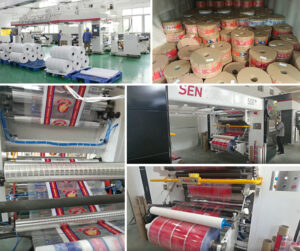
Nylon or polyamide films are commonly employed in the medicine industry. This type of packaging film is not affected by moisture. It indicates that if this package makes contact with moisture, it won’t be compromised to any extent. Not only moisture but also gasses cannot seep into the package, making it safe for medicines.
Above all, these films are solid and can resist pricks. As you know, the medical industry needs to maintain the sterility of its products. This is where this type of packaging comes in handy. Its prices are reasonable, making this type more advantageous.
Other Types of Packaging Films
You will see many types of packaging films, such as rust-proof, specialty, opaque, and anti-fog. However, all these are new types. Instead, they are subtypes and originated from the above-mentioned types. This classification is based on the features of the major.
Those subtypes are nothing but modified versions of the above types. Slight modification is done to obtain the required features and properties. The manufacturers do this to meet the specific requirements. Modifications are made by changing the composition, thickness, etc.
Point to Remember: Do not get confused when hearing different names. The main types are mentioned above. All the other types are based on properties. Sometimes, different products require packaging with specific features. So, the producers have to make modifications.
Which Type of Flexible Packaging Film Should You Choose?

It depends on your needs and preferences. If you are looking for durability, PP films are an excellent choice. On the other hand, if you want to keep your products fresh and safe from bacteria, PVC films will be suitable.
It is vital to note that the pricing of each type of flexible packaging film varies. The kind you should choose also depends on your budget. Product type is a crucial factor that dictates the selection process.
For example, choose a durable and soft package if you are packaging delicate products. If you are packing food, I recommend packaging that keeps it fresh. It is all about your requirements. Once you understand your requirements, you can choose one type accordingly.
Conclusion
Flexible packaging films have become a must-have for industries. They are making our lives easier in one way or another. It won’t be wrong to say that all packaging film types are practical and cost-effective.
Understanding each type is crucial as it helps in the selection process. This article provides insight into the top seven types of flexible packaging films. Each type offers unique properties and applications.
